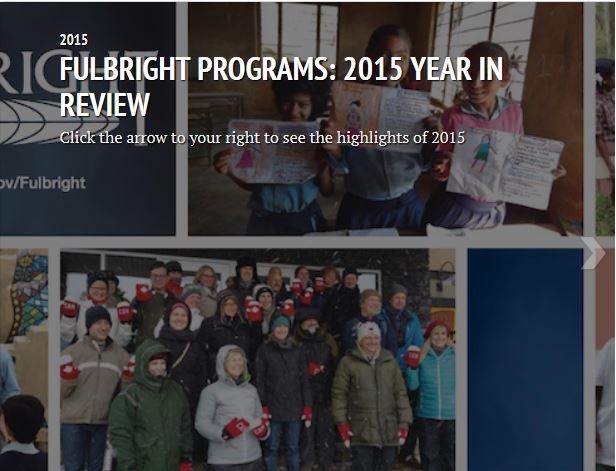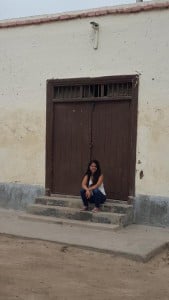Happy Holidays from the Fulbright Program!
December 28, 2015Take a look back at the Fulbright events, stories, videos, and images that made 2015 a memorable year by clicking on the e-card and reviewing our timeline. We look forward to all of the exciting Fulbright stories to come in 2016!
2015 Fulbright Holiday Card from Fulbright Program on Vimeo.
Becoming Part of the Sustainable Energy Revolution: My Experience at the UN
December 28, 2015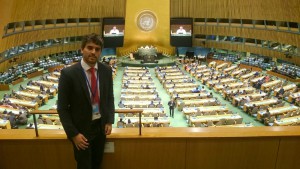
Franco Borrello, 2014-2016, Argentina, attending the 70th UN General Debate at the UN Headquarters in New York City on September 28th, 2015. During this historic event, the 2030 Agenda for Sustainable Development was adopted.
I have dedicated my career to studying energy, and it is one of the reasons why I came to Boston to pursue a Master of Science in Energy Systems at Northeastern University, thanks to the Fulbright Foreign Student Program.
This year, I have had the pleasure of participating in two high-level events at the United Nations Headquarters in New York City. In May, I attended the annual Sustainable Energy for All (SE4ALL) Forum. The SE4ALL initiative is a multi-stakeholder partnership launched by the UN in 2011 with three main objectives to be achieved by 2030: Ensuring universal access to modern energy services; doubling the global rate of improvement in energy efficiency; and doubling the share of renewable energy in the global energy mix.
During this event, I learned about success stories, innovations, and solutions deployed across the world in the energy sector. Most importantly, I interacted with colleagues and decision-makers in my field who shared valuable advice, which in turn, contributed to improving my own ideas. A very important takeaway I was left with was that establishing collaborative public-private partnerships has been very important to the energy field, especially in promoting and reducing risk in renewable energy projects designed for developing countries.
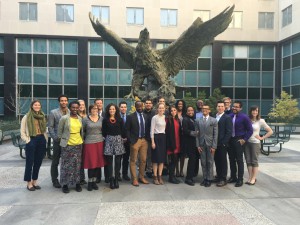
2016 Fulbright Alumni Ambassadors (from left to right, back row): Hanna Miller, Jonathan Rabb, Katelyn Leader, Alex Counts, Chane Corp, David Morales, Ryan Stock, Jilisa Milton, Mathieu Davis, Daniel Koehler; (left to right, front row) Mary Ogunrinde, Hannah Jones, Claire Manneh, Emmanuel Johnson, Christina Galardi, Evy Vourlides, Lauren Pitts, Alex Anderson, David Fleming, Rafael Camacho, Jr., and Emily Yedinak at the U.S. Department of State
On Thursday, December 10, 2015, 20 newly selected Fulbright U.S. Student Program Alumni Ambassadors met in Washington, DC to receive training on how to promote and recruit for the Fulbright U.S. Student Program. Staff members from the U.S. Department of State’s Bureau of Educational and Cultural Affairs (ECA) and the Institute of International Education (IIE), along with previous Fulbright Alumni Ambassadors, shared tips on effectively presenting the impact, innovativeness, and inclusiveness of Fulbright Program opportunities. The orientation workshop emphasized the unique and important role that Fulbright Alumni Ambassadors play in inspiring a diverse range of students, artists, and early career professionals – as well as the Fulbright Program Advisers and college administrators who support them – to learn more about the Fulbright Program and the power of educational and cultural exchange.
This year’s group was joined by notable Fulbright U.S. Student Program alumnus, Alex Counts (1988-1989, Bangladesh), Founder and past President and CEO of the Grameen Foundation, who shared how his Fulbright experiences continue to have an impact on his professional and non-professional life. Alex encouraged the 2016 Fulbright Alumni Ambassadors to share their Fulbright story and utilize the skills and cultural competencies they acquired as Fulbrighters with everyone they meet as representatives of the Program and beyond.
The Fulbright U.S. Student Alumni Ambassador Program was established in 2008 to identify, train and engage a select group of approximately 15-20 Fulbright U.S. Student Program alumni to serve as representatives, recruiters and spokespersons for the Fulbright Program. They are selected annually through recommendations from Fulbright Commissions, U.S. Embassy staff, area managers, and the Fulbright Student Program Outreach Division, and approved by the Fulbright Program’s sponsor, ECA. Fulbright Alumni Ambassadors come from an array of different ethnic and socio-economic backgrounds, states, fields of study, and institutions and have participated in the Fulbright U.S. Student Program in all world areas.
Friday night I was invited to the U.S. Embassy in Lima for a live viewing of the soccer match between the United States and Peru. I was expecting a small gathering but as I walked up to the Embassy, I noticed a long line outside. I asked the guy at the end of the line what the line was for, and he responded: “To view the soccer match!” I lined up behind him. He turned around and said, “You need an invitation.” I assured that him I had one.
Apparently, 180 people had been invited, including the national press and local students learning English. As I passed through security, I could hear the vibrant sounds of the Batucada playing in the background and of course, I did a little samba–– an upbeat dance of Brazilian origin performed during Carnival parades.
As I walked in, I felt like a queen. This was the place were my parents had come more than twenty-five years ago to ask for a Visa to purse their American dream. I remember hearing about bank statements and other paperwork they had to bring; I imagined my dad sitting, nervously awaiting his turn. And now, here I am more than two decades later, walking the same grounds as an American, invited to this private event.
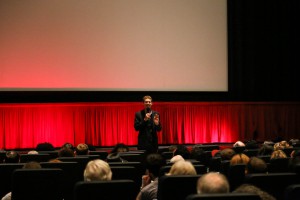
Egill Bjarnason, 2013-2015, Iceland, introducing his short documentary film, “Once the Ice Melts,” to a full house at the Del Mar Theatre in downtown Santa Cruz
In between a gloomy forecast on the future of capitalism and an Op-Ed about why everyone should walk barefoot, the Question of the Week in the student-run newspaper, City on a Hill Press, asked what kind of action people were taking to help the California water rationing. One undergrad no longer kept the tap running while brushing teeth. Another took shorter showers. The third took no showers at all. The fourth, pictured deadpan in a hoodie featuring the school mascot Sammy-the-Slug, was apparently “only drinking espressos because of the drought.”
UC Santa Cruz is the strange uncle in the University of California system, founded fifty years ago to embrace the “eccentric imagination.” Like all UC campuses, it is a research university. Yet the graduate population is less than 1,600, compared with some 10,500 and 12,200 graduate students at UC Berkeley and UCLA respectively. Here, redwood trees outnumber students.

